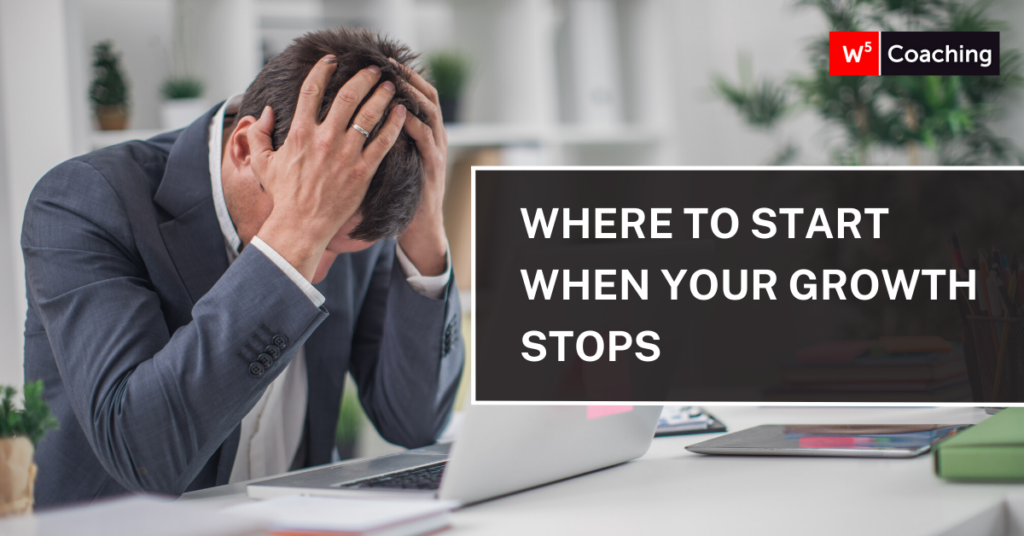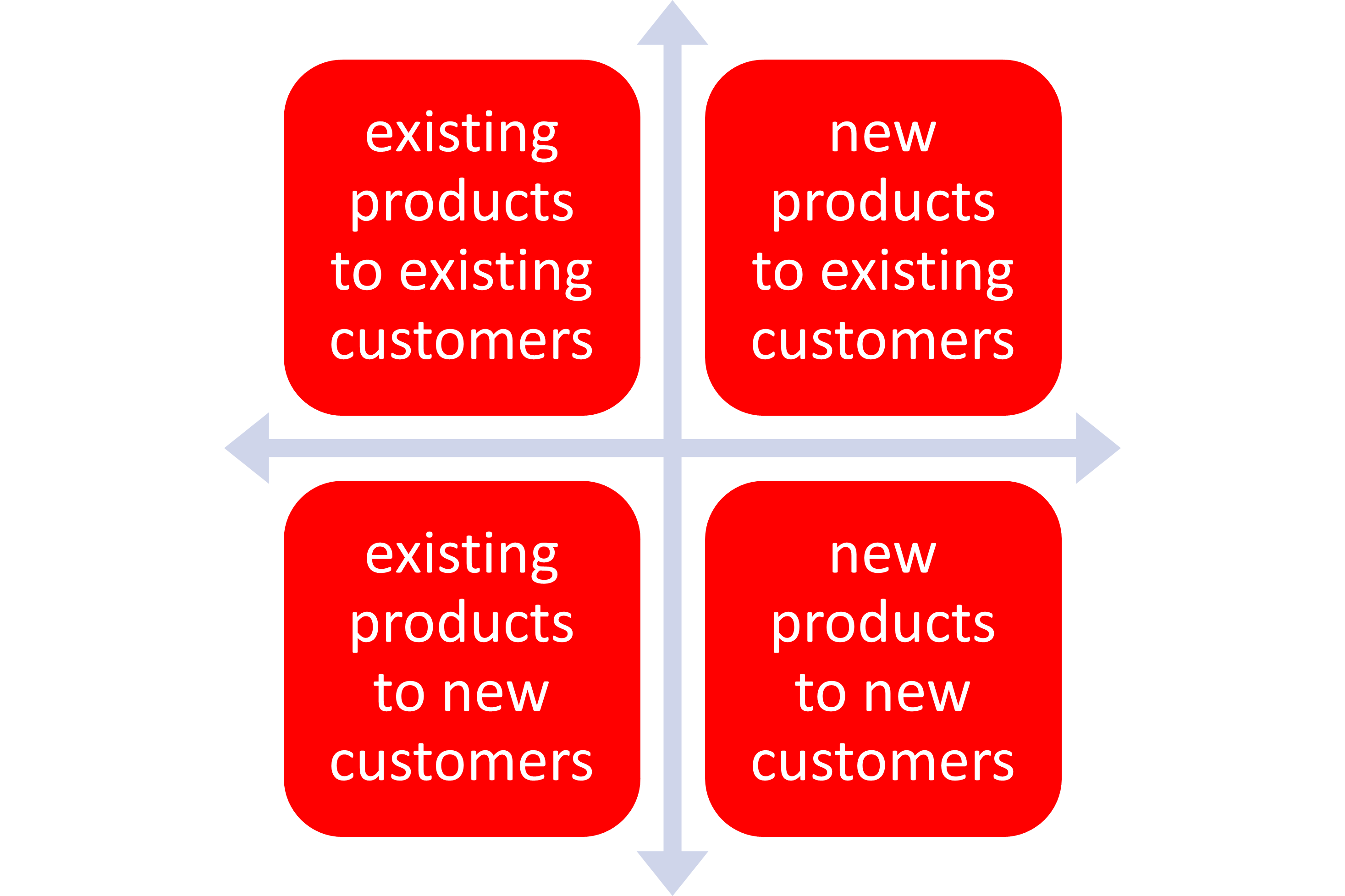Where to start when your growth stops

Many successful businesses reach a point where their growth starts to slow as the company matures.
This often happens when you’ve done a great job of carving out a unique niche.
If you make the world’s greatest $5,000 wine fridge, you may have a successful, profitable business until you run out of people willing to spend $5,000 to keep their wine cool.
The specialty that made you successful can start to hold you back.
Or as Marshall Goldsmith would say:
“What got you here won’t get you there.”
If you find yourself in this position, there are 4 ways your company can begin to grow again.
You can sell:
- existing products to existing customers,
- new products to existing customers,
- existing products to new customers, and
- new products to new customers.
You might visualize the options like this:
I prefer to look at these on a spectrum: from easiest and least risky to hardest and most risky.
Here’s my recommended order for consideration.
1. Sell existing products and services to existing customers
Your best customers are usually the ones who know and like you the most and are often pleased to find out that you – someone they trust – are offering something they need.
For example, Greg is a hardware store owner. He earns a 150% mark up on cutting keys but his cutter was hidden in a corner of the store where nobody could see it.
As a result, he didn’t cut many keys.
One day, Greg decided to move the key cutter and position it directly behind the cash register so everyone paying for his or her hardware could see the machine.
Not surprisingly, Greg started selling a lot more keys to his loyal customers.
If you want to sell more of your existing products to your existing customers, draw up a simple chart of your products and services. Don’t be afraid to dust off those old products that you haven’t paid much attention to lately. List your best customers’ names down one side of the paper and your products across the top. Then cross-reference your customer list with your product list to identify opportunities to sell your best customers more of your existing products.
2. Sell new products and services to existing customers
Because most of my clients don’t have 1,000s of products like a hardware store might carry, offering something new is often a better fit.
While this option will require more work to implement than simply selling something you already have, it still leverages the know, like, and trust that you’ve built up with your current clientele.
Here are some examples of how a few of my clients are implementing this strategy:
- A physiotherapist is considering adding a naturopath to their practice. The same clients who come for physiotherapy may be interested in naturopathic services – and vice versa.
- An HVAC supplier is adding a maintenance program to sell to existing clients
- I’ve worked with several accountants who started offering business coaching or fractional CFO services
Is there a new product or service you could offer your current customers?
3. Sell existing products and services to new customers
Unlike the expensive wine fridge seller, most small businesses have not completely tapped out the market for their products and services.
So selling more products to new customers is the most obvious and common approach when it comes to growing sales.
There are two dimensions to “get more customers”.
The first is to get more prospects (marketing) and the second is to improve your conversion rate. Which is a fancy way of saying “get better at sales.”
Only when you have optimized your conversion rate should you consider increasing the number of prospects into your business.
You many not need to do any new marketing at all if you can do a better job of converting your current prospects into customers.
4. Sell new products and services to new customers
This is the riskiest option of all, but big ideas and breakthroughs often fall under this category.
If you see a need you can fill in a different market, you may want to consider this option.
Once you become successful, it can be tempting to sit back and enjoy your successes.
But if you want to grow your business, you’ll need to figure out how to get more sales.
The least risky strategy will be to figure out what else you could sell to your existing customers.
Want some some help growing your business?
Book a 15-minute call to see if business coaching could be a good fit for you: book time with John

Build a Self-Managing Company
How to build a business that runs smoothly, profitably, and (mostly) without you.
Feeling stressed out and overwhelmed with a business that is taking all your time - and not giving you enough in return?
Are you finding it challenging to hire the right team (and get them to do the right things)?
I wrote this little guide for you!
Enter your details below to receive your free copy!

